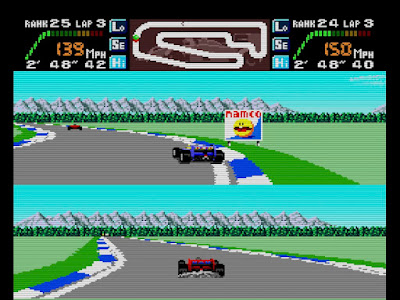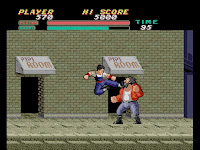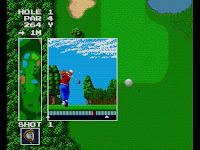A fairy princess has appeared in Pac-Land and it's Pac-Man's job to help her out!
Leap over bridges, cross over rivers and face mountains, forests and deserts in your quest to save her.
But watch out! Monsters are everywhere.
The latest game in my TurboGrafx journey is Pac-Land.
Pac-Land is a home conversion of the popular 1984 arcade game by Namco, and it's a very faithful port.
Unlike the original Pac-Man, Pac-Land is a side-scrolling action adventure game based on the classic cartoon series. The arcade cabinet had a somewhat unique control scheme where there were separate buttons to move left or right, and another button to jump.
The TurboGrafx version also offers this unique control style as an option (however I didn't know it was simply an option when I first started playing it).
In this version you can either use "Button Control" where you move left or right with the I or II buttons and jump by pressing the D-Pad in any direction, or you can use "Level Control" which is a more conventional way where you use the D-Pad to move left or right and jump with the I button.
The water section shown above, for example, is one of the first such water areas that must be jumped over, however the game doesn't give you much indication as to how you are supposed to do that. There is a springboard, but it doesn't carry you over the entire length of the water by itself.
Only upon Googling how in the hell you are supposed to get over this section did I discover that you can repeatedly press the jump button to have Pac-Man float downwards after his springboard jump to help you clear the entire length of the water.
(Can you imagine getting to this section as a kid back in the day? It does cover this under "Long Jump" in the manual, but who the hell reads those things? LOL)
You can view some of my "awesome" gameplay via YouTube in the video below:
You can also make your life a bit easier with this cheat code:
Press and hold the I and II buttons at the title screen, then press Run and it opens a helpful Game Options cheat menu where you can increase the number of lives you get per continue, up to a max of nine, and you can enable Stage selection, plus hear a sound test.
Once you enable the stage selection cheat, you can skip all the way to Round 32 and beat the game if you want to (like I did).
Then you can play "Pro" mode after the credits roll, as if the base game isn't already hard enough as it is.
As you might expect, Pro mode is just a harder version of the regular game, however there are some pallet changes.
While I didn't hate my time playing Pac-Land, the game does get very difficult and the odd controls make it more of a chore to play than I would voluntarily put myself though on a regular basis. There is an odd charm to it, however, and I find myself enjoying it more and more, the more time I spend with it.
If I had this game as a kid, I probably would have put a bunch of time into trying to learn how to play it properly, and try to defeat it without the level skip.
As it is, I can see myself playing Pac-Land more from time to time, just like I tend to do with The Legendary Axe (another hard game that I keep going back to).
Since I still have so many games in my TurboGrafx journey to play, however, I'm ready to move on.
The next game in my TurboGrafx journey is...
Military Madness!
This one looks interesting and I've never heard of it before. Should be fun.
Until next time...























%20case.png)































